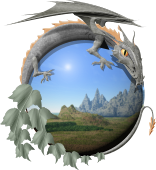- Cities and buildings
- Fields, plains and deserts
- Forests
- Hills and mountains
- Islands and promontories
- Lands, realms and regions
- Rivers and lakes
- Seas and oceans


 |
||||||
|


Which personality type are you?
Take the Free mydiscprofile Personality Test to discover your core personality and your ideal job.   Which personality type are you? |
|
Location
The lands of Middle-earth eastward of the Edge of the Wild, a boundary running north to south, approximately along the line of the Misty Mountains1
Settlements
Various, notably Lórien, Moria and the Woodland Realm, as well as Sauron's stronghold of Dol Guldur, and perhaps also including Mordor
Sources
Numerous, but notably the sources of the Great River Anduin were in the northern parts of the Wild, and that river ran southwards through the region
Important peaks
Many of the peaks of the Misty Mountains fell within this region, including the Mountains of Moria; Erebor, the Lonely Mountain, was also within the Wild
Passes
The High Pass through the Misty Mountains was the most notable route into the Wild
Other names
At least partially equivalent to Rhovanion or Wilderland
Indexes: About this entry:
|
The WildThe dangerous lands of Middle-earth
The lands beyond of the Edge of the Wild2
The lands beyond of the Edge of the Wild2
An untamed, dangerous region of Middle-earth. Its boundaries are somewhat indefinite, but it seems to have been approximately equivalent to the region of Rhovanion. Notes
See also...Arwen Evenstar, Camellia Sackville, Chief’s Men, Dwarves of the Lonely Mountain, Edge of the Wild, Elves of Eregion, Fortinbras Took II, Frodo Baggins, Last Homely House, Longbeards, Lord of the Nazgûl, Marmadas Brandybuck, Mines of Moria, Nori, Ring of Durin, [See the full list...] Indexes: About this entry:
For acknowledgements and references, see the Disclaimer & Bibliography page. Original content © copyright Mark Fisher 1998, 2001, 2013, 2018. All rights reserved. For conditions of reuse, see the Site FAQ. Website services kindly sponsored by myDISCprofile, the free online personality test.Take the FREE myDISCprofile personality test to discover your core personality and your ideal job. |